Irene Castle’s birthday is April 17; Vernon Castle’s is May 2.
Their floating grace seemed to come without effort…they’d not surprise you if they left the solid ground and floated off into space—Carolyn Gaffin.
The Story of Vernon and Irene Castle is one of the great show business romances of all time, and as many such, was short-lived, ending in tragedy. They were the catalysts and the center of a huge, national craze that hit America for social dancing. As impossible as it may seem, the fox trot and similar dances represented a social revolution. (To put it in perspective it was part of a larger pleasure revolution that included the invention of amusement parks, published sheet music and sound recordings, nickelodeons, and vaudeville itself. Truly, the dawn of the 20th century was the birth of “fun”.) Previous to this, a sort of universal Puritanism prevailed. The socially acceptable dances were the waltz and the two steps, which in turn, had been regarded as wicked by conservative forces in their day. One critic called the tango “the dance of the shameless savage and his squaw”, and the turkey trot “a phenomenon closely analogous to those dancing manias of the middles ages…to which victims of a neurotic diathesis are susceptible.” The Castles introduced the country to any number of these racy new dances, and because they were SO imminently respectable it enabled more conventional souls everywhere to follow suit.
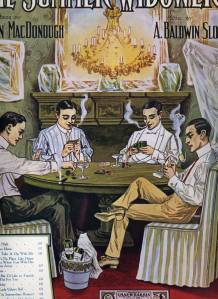
Vernon’s real last name was Blythe. Born in Norwich, England in 1887, he graduated from Birmingham University with an engineering degree. While visiting his sister and her husband (who were actors) in New York on a vacation, he took a small part in The Orchard, having nothing better to do that summer. He took the last name Castle to keep this career detour a secret. He and the audience were mutually smitten, it appears, and he quickly established himself as an eccentric comedian, and around 1904 started working for Lew Fields as a utility man, playing character roles with names like “Souseberry Lushmore.” He had a natural body for comedy, at 5’ 11” weighing only 118 lbs., and with a prominent, hawk-like beak sticking out from the top if it. Critics described him as an “attenuated green bean” and a “soda straw with legs”.
Gilbert Seldes wrote: “Vernon Castle, it is possible, was the better dancer of the two; in addition to the beauty of his dancing, he had inventiveness…but if he were the greater, his finest creation was Irene.”
Irene Foote was a child of privilege. She was born in 1893 on a 35 acre estate in New Rochelle, which, at that time, was in the boondocks. She attended private boarding schools, but when she was home, her mother would trot her out at country club functions to do her Bessie McCoy impression.
New Rochelle at that time was a sort of summer colony for New York stage folk. Vernon would vacation there, and that is how he met Irene at a rowing club in 1910. Homesick for family, he came to the Foote house regularly for Sunday dinner, and eventually established a beach head. He and Irene were married the following year.
Irene had always been stagestruck, so Vernon got her a part in the Hen Pecks, in which he also had a role, which included a comic barber skit, involving a lot of slapstick reminiscent of silent movie comedy. Vernon was booked to perform this skit in a Paris revue. The sketch did not play well, but a dance that he performed in the show with Irene, did. While dining at the Café de Paris, they were asked to perform for some Russian nobility who happened to be there. Their impromptu concert brought the house down, and they were hired for a long term engagement, which led also to gigs at private clubs and parties, quickly ingratiating them with the cream of Society.
When Irene’s father died in 1912, the pair returned to New York, where they began to work at the Café de Paris’s sister club, the Café de l’Opera. As in Paris, they moved about in New York’s high society, making friends, making fans, and making money.
At a party for Elsie Janis in 1913, they improvised a new dance, which was subsequently known as “the Castle Walk.” It caught on rapidly, and soon became a national craze on the order of Beatlemania. They periodically came up with new dances to keep their routine fresh. In addition to the fox trot, the turkey trot, the camel walk, the bear hug, and any other number of zoologically-derived oscillations, they were now introducing the country to the Castle Innovation Waltz, the Castle Lame Duck Waltz, the Castle Half and Half, Castle Innovation Tango, the Castle Maxixe, and the Castle House Rag. To teach these faddish movements they opened both the “Castle School of Dance” and “Castle House”, which was funded and patronized by society women and had marble floors, a fountain, an on-duty orchestra and tea service on silver trays. Among their private clients was William Randolph Hearst.
So popular were the Castles that whatever ridiculous little item Irene might wear would be picked up as a fashion innovation and copied by tens of thousands of women. Examples included a Dutch bonnet, a nun’s habit, an Indian headband and jodhpurs (not all at the same time). Her most revolutionary contribution was the Castle bob, that short haircut for women that truly exploded in the 1920s, becoming an indispensable statement by flappers, to the consternation of Christians, Ku Kluxers, and most husbands.
In 1914 they starred in Irving Berlin’s first full musical Watch Your Step at the New Amsterdam theatre. The pair did numerous silent films, notably one called The Whirl of Life which was scripted by Vernon. In 1916, Irene was voted the Most Popular Movie Actress in America, but it probably had something to do with the fact that Hearst’s Pathe Company was about to release her 10-part serial Patria, and he owned the newspaper that did the polling.
Like Ethyl Barrymore, they only played vaudeville “when they needed the money”, which, because of Vernon’s profligacy, was constantly. In the mid-teens they embarked on a tour of 32 cities in 28 days, which no one does who can afford to relax. The team headlined in vaudeville from 1914-16, when Vernon enlisted in the Royal air service to fight the Germans. Vernon served bravely as a pilot, flying several missions into enemy territory, performing aerial reconnaissance. He died in 1918 avoiding a mid-air collision while instructing a student pilot in Fort Worth, Texas.
Irene retired soon thereafter, emerging only to write her memoirs Castles in the Air, and to help supervise the film based on it The Story of Vernon and Irene Castle, which was the last in the successful Fred Astaire–Ginger Rogers series of the 1930s. Irene Castle passed away in 1969 – 51 years after her dance partner.
I visited their graves at Woodlawn Cemetery in the Bronx in 2015:
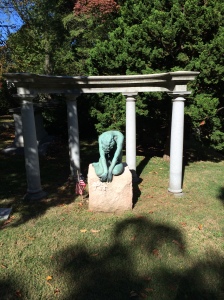
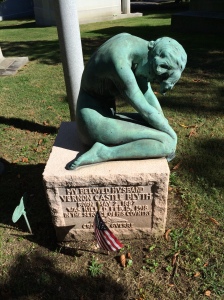

For lots more on the team, may I recommend Eve Golden’s Vernon and Irene Castle’s Ragtime Revolution. To find out more about the history of vaudeville, including more on major dance teams like Vernon and Irene Castle, please consult No Applause, Just Throw Money: The Book That Made Vaudeville Famous.


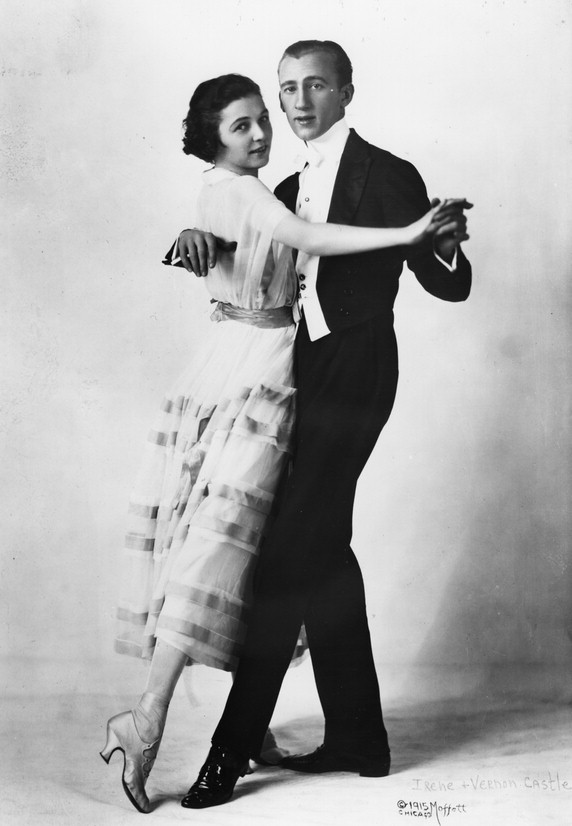

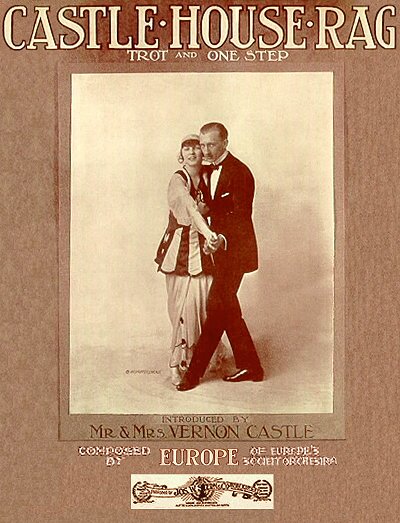
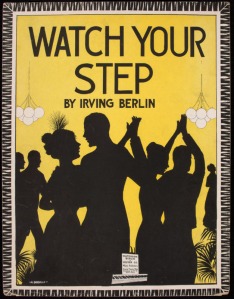
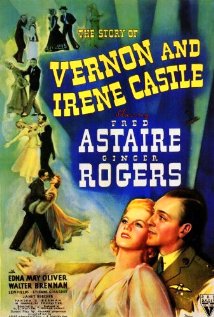
dID SHE EVER MARRY AGAIN?
LikeLike
yes, three more times!
LikeLike
they seemed to have a happy marriage. HOW LONG WERE THEY MARRIED?
LikeLike
From 1911 until his death in 1918
LikeLike
[…] schedule, made the bookings, selected her material, chose her wardrobe, and chaperoned her dates. Irene Castle called Ma Janis Elsie’s “ringmaster” and “Svengali”. “for pure drive and ambition,” […]
LikeLike
[…] by crisscrossing the nation selling millions in war bonds. And some were to pay the ultimate price. Vernon Castle, one-half of the nation’s premier dance team enlisted in the RAF (he was Canadian) and died in […]
LikeLike
[…] she alternated vaudeville with musicals such as Lew Fields’ The Henpecks (1911, also with the Castles) and the Shuberts’ The Whirl of Society (1912, also with Al Jolson). In the mid-teens she […]
LikeLike
[…] at the Palm Beach Hotel. This brought him into contact with high society, where he got to know Vernon and Irene Castle and others. While performing at a Nora Bayes benefit with James Reese Europe’s Society Orchestra, […]
LikeLike
[…] Like Citizen Kane’s Mr. Bernstein, Weber and Fields were there before the beginning and after the end. As late as 1939, Lew Fields portrayed himself in Astaire and Rogers film The Story of Vernon and Irene Castle. […]
LikeLike
[…] at the Palace. That year, he completed his first full-length theatrical score, Watch Your Step, for Vernon and Irene Castle. On May 15, 1915 at the Palace an all-time, all-Berlin record was set when three acts plus the […]
LikeLike
[…] schedule, made the bookings, selected her material, chose her wardrobe, and chaperoned her dates. Irene Castle called Ma Janis Elsie’s “ringmaster” and “Svengali”. “for pure drive and ambition,” […]
LikeLike